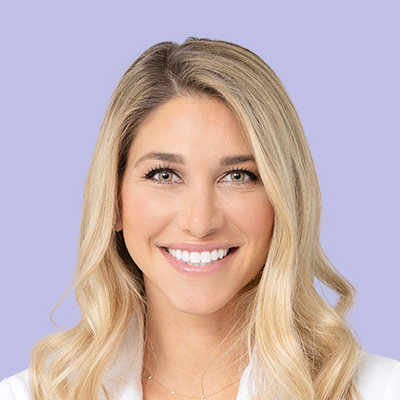How it works:
Share your skin goals and snap selfies
Your dermatology provider prescribes your formula
Apply nightly for happy, healthy skin
How it works:
How it works:
Share your skin goals and snap selfies
Your dermatology provider prescribes your formula
Apply nightly for happy, healthy skin
How it works:
What is dermaplaning? What to know about this skincare treatment
This common procedure can help you achieve a fresh, radiant glow.





Hi, Curology readers! I’m Stephanie Garbaczewski, PA-C.
As a physician assistant with quite a bit of experience in dermatology, I’m thrilled to share my insights on dermaplaning, a skincare trend that’s really making waves in the beauty industry!
Whether you’re already a skincare enthusiast or just beginning to explore the world of skin treatments, I’m here to provide you with all the information you need about dermaplaning. It’s a simple yet revolutionary treatment that can significantly impact your skin’s health and appearance.
Let’s dive into what makes dermaplaning so effective and how it can be a game-changer in your skincare routine.
What is dermaplaning?
Dermaplaning is a cosmetic procedure involving the use of a sterile surgical scalpel to exfoliate your skin’s surface, removing dead cells and fine facial hair. Skincare professionals perform it by gently scraping your skin at a specific angle, promoting smoother texture and a radiant complexion.
The procedure is simple enough to do at home by yourself. However, it’s important to remember that the process is better done by trained experts who consider your skin conditions and sensitivities to ensure safety and effectiveness.
How does dermaplaning work?
Dermaplaning sounds technical, but it’s a straightforward procedure that helps create a smoother texture and a radiant complexion.
The process begins with cleansing, followed by controlled scraping motions using a sterile surgical scalpel, mainly on the face. Post-procedure, your skin may appear slightly red, so a soothing moisturizer is applied to help calm your skin.
A unique blade designed for precision is used to help remove the dead skin cells on your skin. During dermaplaning, the edge of this blade is perpendicular to the skin—think of it as holding a pencil upright against a piece of paper—which then glides parallel across the skin’s surface.¹
This action is very gentle and controlled. It’s not about cutting or excising your skin but more about skimming off the rough top layer like an extensive exfoliation.
The benefits of dermaplaning
Dermaplaning offers several potential skin benefits, including improved texture, a smoother appearance, and enhanced radiance. This procedure may lead to increased absorption of topical products since it is exfoliating dead skin cells and vellus hair.²
Dermaplaning for exfoliation
There are two main types of exfoliation: physical and chemical. Dermaplaning is a physical exfoliation technique that immediately reveals fresher skin. Meanwhile, chemical exfoliation, like chemical peels, dissolves the “cement” that holds dead skin cells on our skin’s surface.
Dermaplaning is gentler than some chemical peels, making it suitable for sensitive skin. Combining dermaplaning with a chemical peel can leave your skin radiant and glowing if your skin can tolerate it!
Will dermaplaning work for me?
So you’re wondering if dermaplaning is a good option for you?
The ideal candidates for dermaplaning are individuals with dry, rough skin and vellus hair (“peach fuzz”) seeking improved texture and a radiant complexion. The procedure effectively addresses these concerns.
Dermaplaning isn’t suitable if you have active acne. It’s recommended to wait until the acne clears up before the procedure, as it can potentially exacerbate inflammation and lead to irritation. Other skin conditions, such as eczema, should be cautiously approached individually, case by case.
Everyone’s skin is unique, so a consultation with a skincare professional is always a good idea to determine if you’re a good candidate.
The key takeaways
Dermaplaning is a cosmetic technique where a sterile surgical scalpel is used to exfoliate the skin’s surface.
This procedure removes dead cells and fine facial hair, resulting in smoother skin and a radiant complexion.
Key benefits include improved skin texture, better makeup application, and enhanced absorption of skincare products.
The best candidates for dermaplaning are those with dry, rough skin and vellus hair, or “peach fuzz.” The procedure is not recommended for people with active acne or certain skin conditions like eczema.
For best results, it’s recommended to undergo dermaplaning every 4 to 6 weeks.
Dermaplaning can be effectively combined with other treatments, like chemical peels or facials, to enhance overall results.
Curology’s personalized products can be a perfect addition to your skincare routine. Start your journey with Curology today to keep your skin looking radiant and healthy!
Treat your skin with the care it deserves — try Curology today!
Dermaplaning is a popular and generally safe cosmetic procedure that has gained recognition for its ability to rejuvenate skin. It’s known for delivering immediate, albeit temporary, benefits like improved texture, smoother appearance, and a noticeable boost in radiance.
But, because skincare isn’t a one-size-fits-all solution, it might not suit everyone. That’s where personalized skincare, like Curology, can help.
Our approach is simple yet effective: We offer customized skincare solutions that licensed dermatology providers prescribe. Skincare should be as unique as you are to achieve the best results. Whether enhancing your post-dermaplaning glow or crafting your daily skincare routine, our team is committed to formulating the right products for your skin type and concerns.
Get your personalized skincare routine with Curology
Get your personalized skincare routine with Curology


Start your personalized skincare journey* with us today and embrace the skin you're in!
FAQs
Dermaplaning can be a fantastic choice for many people looking to enhance their skin’s appearance. It’s particularly effective for those who want to address issues like dryness or rough texture and those with light, fine facial hair. However, it’s not a one-size-fits-all solution. For instance, if you’re currently experiencing active acne outbreaks or have susceptible skin conditions like eczema, dermaplaning might not be the best option. It’s always best to consult with a skincare professional to assess your needs.
Dermaplaning offers several benefits to your facial skin. Unlike some harsher exfoliation methods, dermaplaning is relatively gentle and suitable for sensitive skin. One of the major advantages of this technique is that it can enhance the effectiveness of your skincare routine. After dermaplaning, products like moisturizers and serums may be absorbed more efficiently. Additionally, this procedure can leave your skin looking brighter and more youthful. However, as with any skincare treatment, ensuring it’s the right fit for your skin type and concerns is crucial. A professional consultation can provide tailored advice and ensure you get the most benefit from dermaplaning.
Dermaplaning is generally safe when performed by trained professionals. Potential side effects include temporary redness, mild irritation, and sensitivity immediately after the procedure. These typically subside within a day or two. In rare cases, there’s a slight risk of cuts or nicks, which could lead to infection if not properly cared for.
For optimal results, dermaplaning can be done every 4 to 6 weeks. Dermaplaning at this frequency aligns well with the natural cycle of your skin’s rejuvenation and shedding process, allowing enough time to recover and for new layers of skin cells to emerge.³ While it can help to give your skin that immediate glowing and smooth appearance, the effects are not permanent. Regular sessions help maintain these benefits over time.
Yes! Dermaplaning can be combined with procedures like chemical peels and facials for enhanced results. The exfoliation from dermaplaning and hair removal may improve the absorption of chemical peels, promoting better penetration of active ingredients. Facials following dermaplaning may benefit from a smoother skin surface as well.
P.S. We did the homework so you don’t have to:
Chang, D.K., et al. A Safe, Modern Treatment of Rhinophyma: The 5-Step Technique. Plast Reconstr Surg Glob Open. (2020, June 23).
Tijani, A.O., et al. Dermaplaning for Transdermal Drug Permeation Enhancement: Qualitative and Quantitative Assessment. AAPS PharmSciTech. (2023, February 1).
Wallace, H.A., et al. Wound Healing Phases. StatPearls. (2023, June 12).
Meredith Hartle is a board-certified Family Medicine physician at Curology. She earned her medical degree at Kirksville College of Osteopathic Medicine in Kirksville, MO.
Stephanie Garbaczewski is a Certified Physician Assistant (PA-C) with a Masters in Medical Sciences from Stanford University and specializes in dermatology and aesthetic medicine.
*Cancel anytime. Subject to consultation. Results may vary.

Curology Team

Meredith Hartle, DO